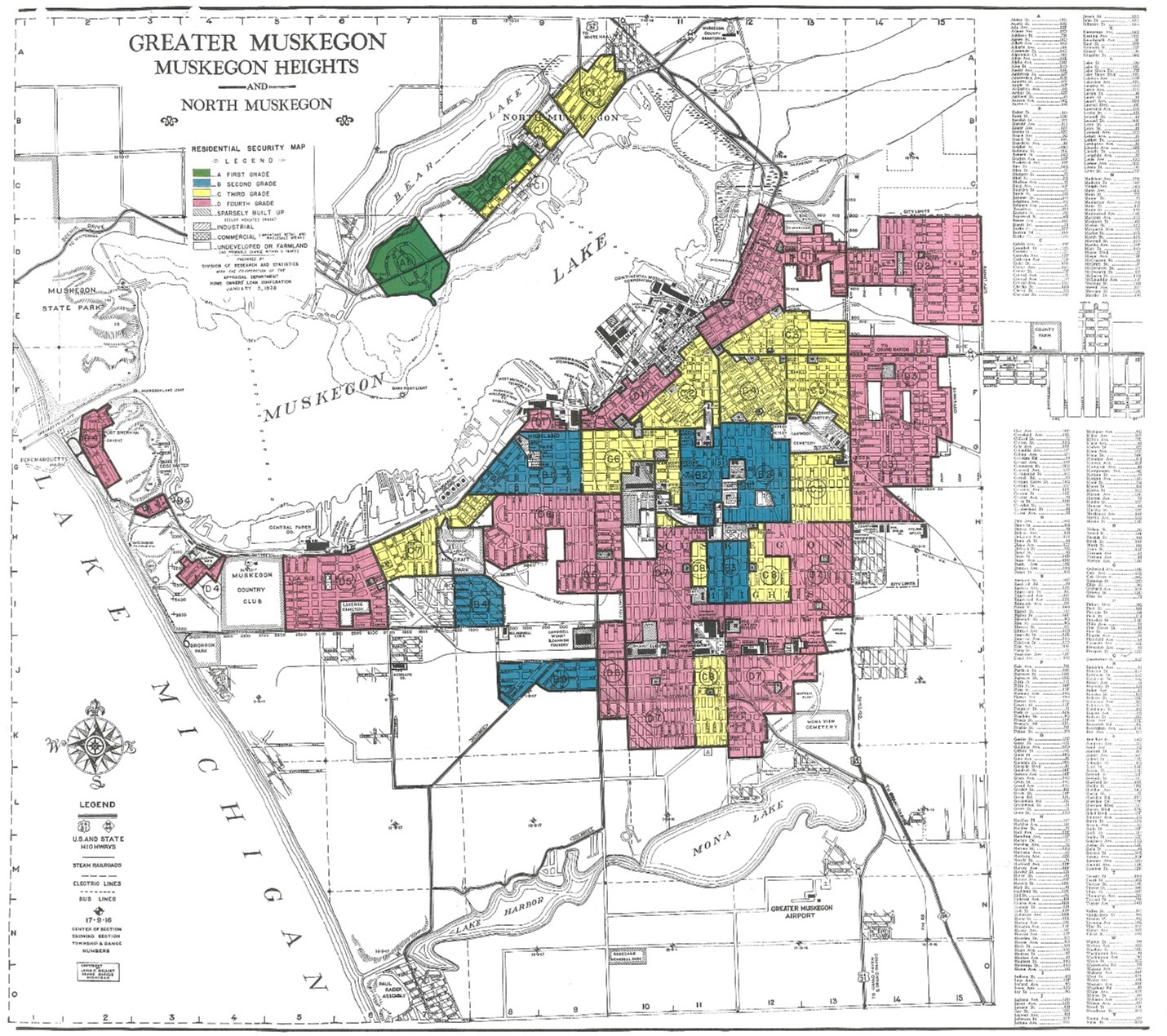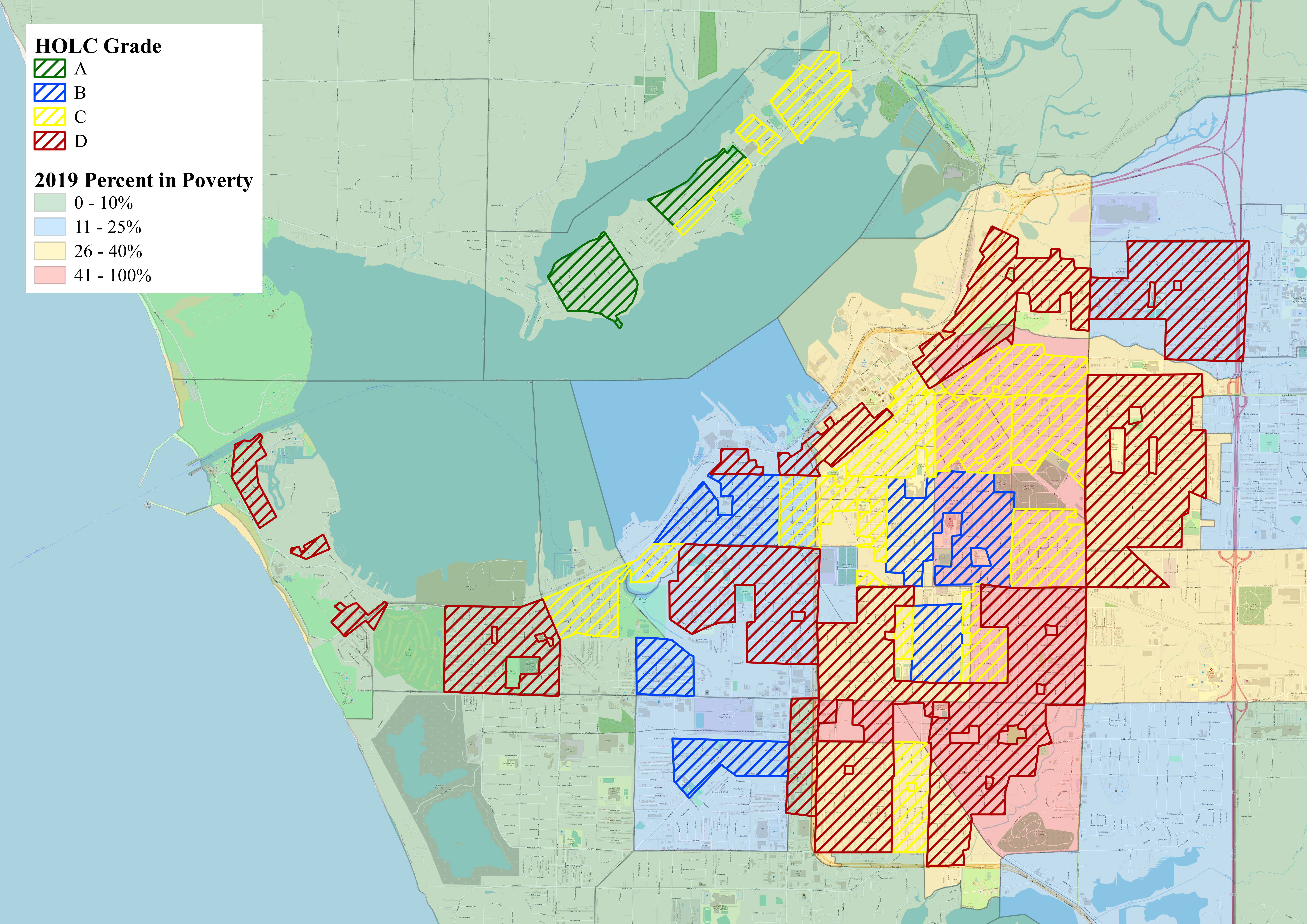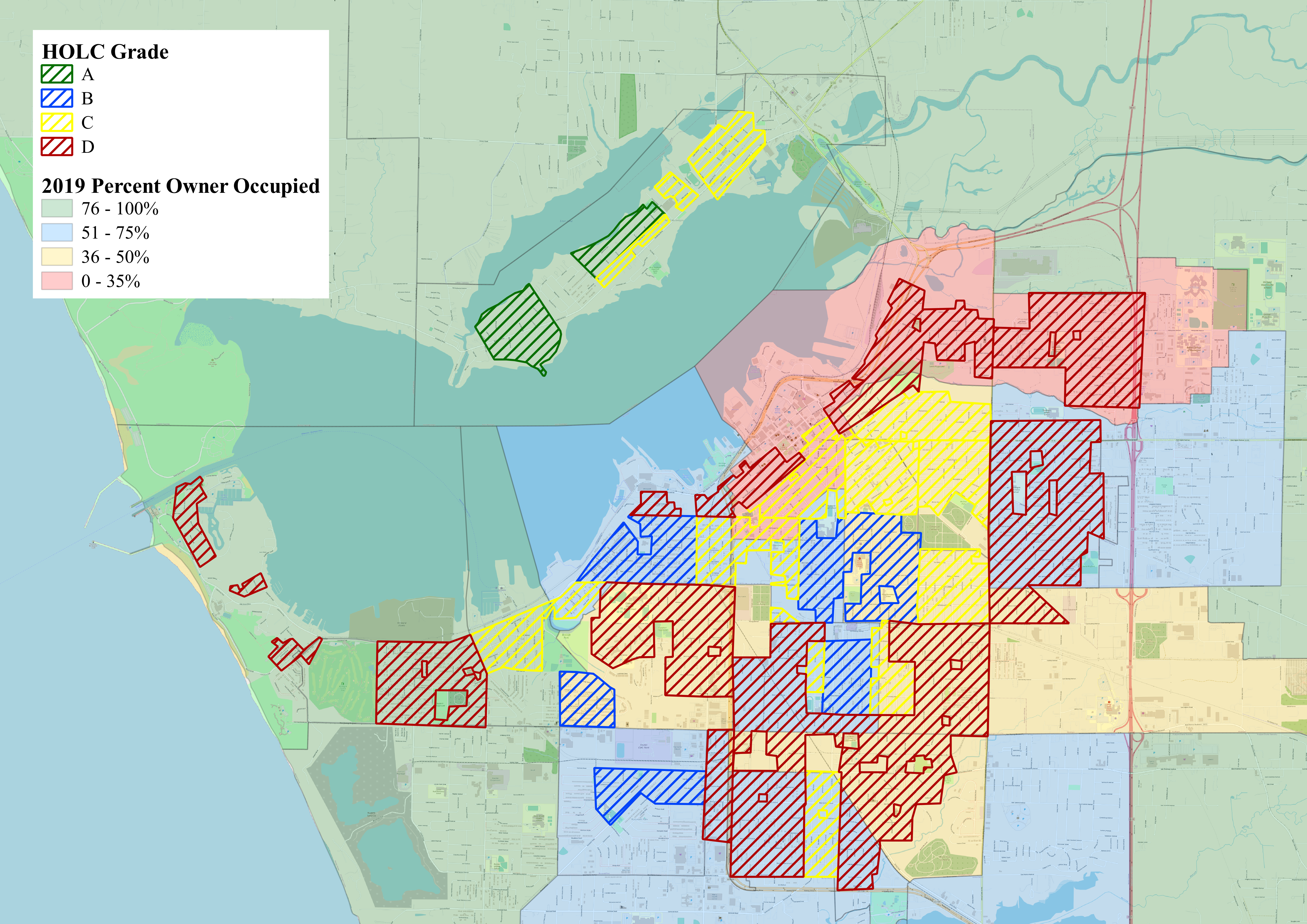Muskegon
The federal government redline mapped Muskegon on January 5, 1938. Consistent with the requirements of the government Underwriting Manual, the redline mapping specifically targeted residents of color, deeming their neighborhoods as “hazardous” to investment because they had residents of color or were even near residents of color. The original redlining map is shown below. While HOLC did not itself implement these redlining maps, it promoted these practices and showed private industry groups and the FHA how to reproduce these maps. We also have a map overlaying the original HOLC boundaries on present-day segregation, which starkly show the continued effects of these racist practices. The strong visual connection between original HOLC grades and present-day racial segregation, shows a legacy of redline mapping on present-day outcomes.

Muskegon Neighborhood Grading Justifications
The racist language and explanations below are quoted from the “Area Description Files” filled out by government appraisers. The language and justifications are coarse and offensive. Nonetheless, it is important to remember our past in all of its coarseness is offensiveness to fully understand the context that we confront today, especially when developing equitable housing policies.
Redlined neighborhoods
Neighborhoods to the north and south were given red ratings because of “infiltration” of “foreign-born” (Polish and Hungarian) and Black people.
The redlined neighborhoods on the Lake Michigan coast were graded red due to unsafe building conditions on sand dunes.
Yellow-graded neighborhoods
Neighborhoods between the red and blue neighborhoods were graded as yellow because they were [racially] “badly mixed” and bordered neighbors with Black people.
Blue-graded neighborhoods
Neighborhoods were generally graded blue because they were entirely “White” and not bordered by Black or “foreign-born” neighborhoods.
Green-graded neighborhoods
The North Muskegon peninsula was the only neighborhood given the “A,” green rating. The area received this green rating because it was “Closely held by [racial] syndicate,” with no Black or foreign-born “infiltration.”
The Legacy of Redlining in Muskegon
Segregation
We overlay the historical HOLC “redlining” map on present-day demographic data to show the persistence and continued relevance of these racist policies on present-day segregation. We mirror the racist HOLC color gradation to help visualize the continued segregation, as a lasting impact of redlining.

Higher segregation is associated with lower incomes, lower educational attainment, more crime, worse health outcomes, and higher inequality. But segregation is not the only lasting impact of redlining in Michigan Cities, or in Muskegon. Researchers have shown that redlining also directly reduced many of these outcomes.
Poverty
People are more likely to live below the poverty line in areas that the government redlined in general, and the map below indicates that Muskegon is no exception. Of course, there are neighborhoods that do not follow the original HOLC grade. But we know that among the legacies of redlining, areas that the government redlined are more likely to be impoverished today. For emphasis, areas that the government redlined were not necessarily poor in the 1930s, but rather may have simply had a more diverse population.

Housing
Perhaps unsurprisingly, one of the legacies of redlining is in housing. Government-redlined neighborhoods are less likely to have homes that are owned and more likely to be rented. Thus, people who live in those neighborhoods, who are more likely to be people of color, continue to be less likely to be accumulate wealth through home equity.

This research was conducted by Michigan State University Assistant Professor and Extension Specialist Craig Wesley Carpenter, Ph.D. (@DrCWCarpenter or cwcarp@msu.edu).



 Print
Print Email
Email